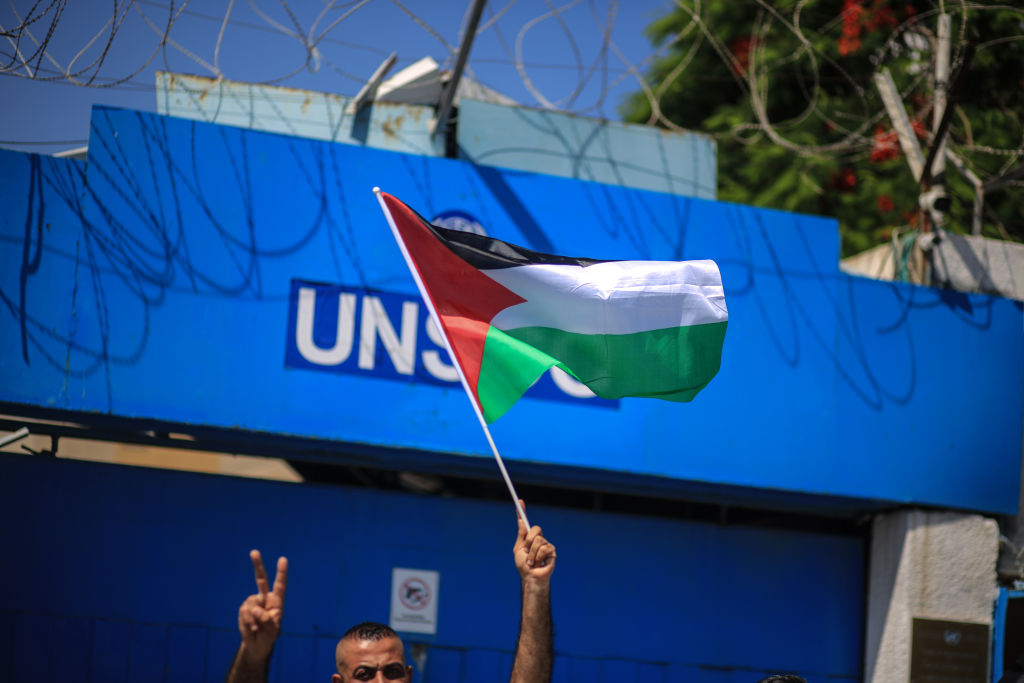
In January, President Donald Trump rolled out his much-touted vision for Middle East peace. It sought to formalize Israel’s longstanding colonial settlement enterprise into what it considered a blueprint for a conflict-ending agreement, and was, therefore, met with absolute rejection by the Palestinians.
Nevertheless, the Israeli prime minister announced his intention to pursue what he considered to be an immediate deliverable of Trump’s vision: the annexation of 30% of the landmass of the West Bank, including the Jordan Valley, territory essential to the sovereignty of a future Palestinian state. The international community warned against the adverse consequences that maneuver might entail for regional peace, security, and normalization.
It does not seem, however, that the Israeli government is about to heed such warnings. It believes that, at the end of the day, the rest of the world will fall quiet — just as it did after the U.S. recognized Jerusalem as Israel’s capital two-and-a-half years ago, and the more recent declaration that Israeli settlements were not illegitimate under international law.
The Israeli government gave itself a deadline of July 1 to announce exactly how it will go about the annexation of these lands. However, even if it defers action altogether, that still should leave the Palestinian leadership with important decisions to make. I believe a credible response is urgently needed, and long overdue. That means rethinking our past commitments in order to build a new future together.
The leadership has not been quiet. On May 19, President Mahmoud Abbas declared that the Palestine Liberation Organization (PLO) was thereafter absolved of all agreements and understandings with the U.S. and Israeli governments. That was a significant declaration, even though it came after many years of repetitive threats of abandoning the Oslo framework — leading some to wrongly dismiss it as yet another hollow threat.
To me, however, the issue is not whether this declaration is significant but whether it goes far enough. Specifically, is it likely to stop the annexation train? More importantly, will it fundamentally alter the situation that made it possible for Israel to board that train in the first place? The answer to the first question is, at best, a maybe. To the second, it is an unequivocal no.
All is not lost, however. To restore full agency in our quest for freedom and dignity, it is time for the Palestinian leadership to absolve itself of an earlier declaration. The PLO must with haste rethink its 1988 peace initiative —specifically, the willingness to accept a Palestinian state on 22 percent of historic Palestine, under a so-called “two state solution.”
What has this bet the PLO made in 1988 won us? Over three decades of a “peace process” that ended the first intifada and deflated the can-do spirit it inspired, while making it possible for Israel to progressively deepen its occupation. It made it impossible for Palestinians to get anything but self-rule in areas under Israel’s dominion, and gave Israel an important counterargument against charges of apartheid. Is it unreasonable for the Palestinian people to expect their sole legitimate representative to reconsider this gamble?
Instead, the PLO must propose an alternative way forward that could garner broad-based Palestinian support. What the Palestinian people desperately need is a clear statement — a definition upon which we can legitimately pursue our national aspirations. I believe a broad Palestinian national consensus can be built upon a platform committing to either of two options.
The first is anchored on the model of a single state, whose constitution provides for full equality for all of its citizens, and without any discrimination on any basis whatsoever. The second is an agreed two-state solution — but only with an independent and fully sovereign Palestinian state on the entire territory occupied by Israel in 1967, including East Jerusalem, and with any engagement in a peace process that is to lead to that outcome preceded by international recognition, including by Israel, of the Palestinians’ right to such state, as well as our other rights provided for under international law—namely, the right of return in accordance with UN resolution 194 and the right to self-determination.
Obviously these two options are mutually exclusive. But, they have to both be included in the new platform to ensure that the PLO—as it begins to take concrete steps to include non-PLO factions and forces opposed to the Oslo framework or the 1988 compromise—is instantaneously empowered to convey, on behalf of all Palestinians, what we are prepared to accept. At some point, Palestinians will have to choose between the two possible options outlined above. That, however, will not happen unless Israel recognizes our national rights.
In the meantime, we should spare no effort to begin the process of reunifying our polity and rebuilding and strengthening our institutions—an especially demanding undertaking after thirteen years of fracture and separation. We need an agenda that empowers us to become the masters of our own destiny. Once we converge on a policy statement built on the options above, we can begin piecing together that agenda.
That is all imminently possible if our leadership signals its willingness to lead on the strength of such a vision. The choice at this moment is ours to make. Once we decide to act, all—near and afar—will begin to realize that our will has not been broken, and that it will never be.
More Must-Reads From TIME
- The 100 Most Influential People of 2024
- The Revolution of Yulia Navalnaya
- 6 Compliments That Land Every Time
- What's the Deal With the Bitcoin Halving?
- If You're Dating Right Now , You're Brave: Column
- The AI That Could Heal a Divided Internet
- Fallout Is a Brilliant Model for the Future of Video Game Adaptations
- Want Weekly Recs on What to Watch, Read, and More? Sign Up for Worth Your Time
Contact us at letters@time.com